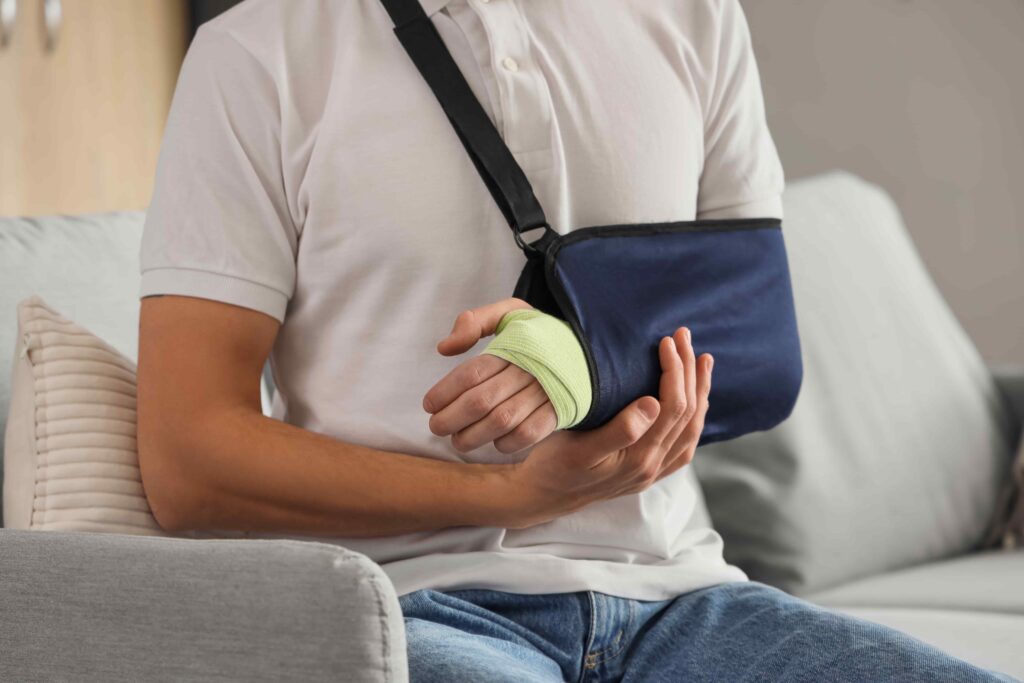Pain and suffering represents one of the most challenging aspects of any personal injury claim, yet it often makes up the largest portion of your potential compensation. Unlike medical bills or lost income that come with clear dollar amounts, pain and suffering involves the subjective experience of your physical discomfort, emotional distress, and diminished quality of life. Proving these intangible damages requires a strategic approach that transforms your personal experience into compelling legal evidence. This is precisely why working with an experienced personal injury attorney becomes essential for securing the compensation you truly deserve.
Insurance companies understand that pain and suffering claims are harder to quantify, which makes them prime targets for dispute and reduction. They'll deploy teams of adjusters and lawyers whose sole purpose is minimizing these awards. Without proper legal representation, you're essentially bringing a butter knife to a gunfight when facing these well-funded corporate machines.
Schedule A Free Case Consultation
Understanding What Pain and Suffering Actually Means

Pain and suffering encompasses far more than just physical discomfort following an accident. It includes your emotional distress, mental anguish, loss of enjoyment in activities you once loved, and the overall impact on your daily life. Think of it as the difference between existing and truly living. Physical pain might keep you awake at night, but the suffering extends to missing your child's baseball games, being unable to garden, or losing the confidence to drive again.
The legal system recognizes two distinct categories of pain and suffering. Physical pain involves the actual bodily discomfort from your injuries, ongoing medical treatments, and the healing process. This might include the sharp pain from a broken bone, the burning sensation from nerve damage, or the constant ache from soft tissue injuries. Mental anguish covers your emotional response to the accident and its aftermath, including anxiety, depression, fear, and the psychological trauma of reliving the incident.
Both types of suffering are equally valid and compensable under personal injury law. However, proving their existence and severity requires different types of evidence and documentation. Your personal injury lawyer will help you understand which category applies to your specific situation and how to build the strongest possible case for both.
Why Insurance Companies Fight Pain and Suffering Claims
Insurance companies prioritize profit margins, and pain and suffering awards impact their bottom line. They'll dispute the severity and legitimacy of your pain, using sophisticated software to evaluate claims.
However, this software may not capture the unique impact of your injuries on your life. Insurance adjusters are trained to minimize awards, suggesting your pain is temporary or exaggerated, or attributing it to pre-existing conditions.
To counter this, having a personal injury attorney advocate for you is vital. They'll fight for fair compensation, considering the specific circumstances of your case and the true impact of your injuries on your life.
Creating a Personal Pain Journal
A detailed personal journal can be a powerful tool for proving pain and suffering. Document your daily experiences, including activities you can no longer do, modifications to your routine, and emotional impacts.

Include specific examples, such as needing help with tasks or leaving social gatherings early due to discomfort. Record concrete details to transform abstract concepts into relatable experiences.
Start journaling as soon as possible after the accident and continue regular entries throughout your recovery. This creates a timeline showing the evolution of your pain and suffering, demonstrating the ongoing nature of your damages.
Gathering Evidence From Friends and Family
Family and friends can provide powerful testimony about the impact of your injuries on your life. They often notice changes in your behavior and capabilities that you may not recognize in yourself.
These witnesses can describe how your personality, activities, and relationships have changed since the accident. Your attorney will help identify effective witnesses and prepare them to provide compelling testimony, guiding them on relevant information and presentation.
Their observations can carry significant weight. They knew you before the accident and can describe specific changes, helping to demonstrate the full extent of your pain and suffering.
The Importance of Mental Health Treatment
Seeking mental health treatment after an accident is critical, both for your well-being and your personal injury case. Professional treatment addresses psychological impacts like PTSD, depression, and anxiety, while creating documentation that supports your pain and suffering claim.
Therapists and mental health professionals can provide objective evidence of your mental anguish and its connection to the accident. Don't let stigma prevent you from getting care.
Your personal injury lawyer will help you understand how mental health treatment can strengthen your case while supporting your recovery. It's essential to prioritize your mental health and document your struggles for a stronger claim.
Expert Testimony and Life Care Planning
Complex pain and suffering claims often require expert testimony to help judges and juries understand the full scope of your damages. Medical experts can explain how your injuries typically affect people and what your future prognosis looks like. They can testify about the ongoing nature of your pain and the treatments you'll likely need going forward.
Life care planners represent another type of expert who can be invaluable in pain and suffering cases. These professionals evaluate how your injuries will affect your life over the long term and create detailed plans for your future care needs. They consider factors like ongoing medical treatment, home modifications, assistive devices, and changes in your ability to work or enjoy recreational activities.
Vocational experts might also be necessary if your injuries affect your ability to work. They can testify about how your pain and limitations impact your earning capacity and career prospects. This testimony helps establish the full financial impact of your injuries, which supports larger pain and suffering awards.
The Day-in-the-Life Documentary Approach
Some personal injury attorneys use "day-in-the-life" documentaries to show how injuries affect their clients' daily existence. These professionally produced videos follow accident victims through typical days, showing their struggles with routine tasks and the accommodations they've had to make. This approach can be particularly effective because it shows rather than tells how injuries impact quality of life.
These documentaries need to be authentic and avoid appearing staged or manipulative. They should show genuine challenges and limitations rather than exaggerated difficulties. The goal is to help decision-makers understand your real experience, not create sympathy through artificial means.
Your personal injury lawyer will determine whether this approach is appropriate for your case and how to implement it effectively. They'll work with professional videographers who understand the legal requirements and can create compelling evidence that supports your claim.
Demonstrating Lost Enjoyment of Life
Lost enjoyment of life represents a specific type of pain and suffering that focuses on activities and experiences you can no longer enjoy because of your injuries. This might include hobbies you've had to abandon, sports you can no longer play, or social activities you avoid because of pain or limitations. The key is showing how your injuries have diminished your overall quality of life.

This type of damage often requires creative evidence gathering. Your personal injury attorney might collect photos and videos of you participating in activities before your accident, then contrast them with your current limitations. They might gather testimony from coaches, instructors, or fellow participants who can describe your previous level of involvement and skill.
The goal is to demonstrate not just that you can't do certain things, but that losing these activities has had a significant impact on your happiness and well-being. This requires showing the importance these activities hold in your life and how their absence affects your overall satisfaction and mental health.
Schedule A Free Case Consultation
How Pre-Existing Conditions Affect Your Claim
Having pre-existing medical conditions complicates pain and suffering claims, as insurance companies may argue that your pain stems from prior conditions. Your lawyer must distinguish between pre-existing discomfort and new pain caused by the accident.
Detailed medical testimony and analysis of your records can help show how the accident aggravated or worsened your conditions.
The "eggshell skull" doctrine protects victims with pre-existing vulnerabilities, holding defendants responsible for all consequences of their actions. Your attorney will gather evidence to demonstrate the accident's impact on your condition and fight for fair compensation for your pain and suffering.
Building a Comprehensive Timeline
Successful pain and suffering claims require detailed timelines that show how your injuries have affected you from the moment of your accident through your current condition and into the future. This timeline should include major medical events, changes in your pain levels, modifications to your daily routine, and impacts on your relationships and activities.
Your personal injury attorney will help you construct this timeline using medical records, your personal journal, witness statements, and other evidence. They'll look for patterns that show how your pain and suffering have evolved over time and identify key moments that demonstrate the severity of your experience.
The timeline should also project into the future, showing how your injuries are likely to affect you going forward. This might include ongoing medical treatments, permanent limitations, and activities you'll never be able to enjoy again. Future pain and suffering represents a significant portion of many personal injury awards.
Schedule A Free Case Consultation
The Role of Credibility in Pain and Suffering Cases
Your credibility is important to the success of your pain and suffering claim, as insurance companies will look for inconsistencies in your statements and evidence that you're exaggerating symptoms. Being honest with your lawyer about your condition and limitations is essential. Social media activity can also impact your credibility, as insurance companies monitor online posts, photos, and comments for contradictions.
Your attorney will advise you on protecting your credibility, including guidance on social media use, public activities, and interactions with insurance representatives. They'll help you avoid actions that could be misinterpreted and used against you.
Calculating Pain and Suffering Damages
Calculating pain and suffering damages is complex, as there's no standard formula. The amount depends on factors like injury severity, age, prognosis, and impact on daily life.

Personal injury lawyers use methods like multipliers or per diem approaches as starting points, but the final calculation relies on the case's specific facts. The key is presenting comprehensive evidence that shows the substantial impact of pain on your life.
Your attorney will help gather and present evidence to justify a significant award, demonstrating not just pain, but its lasting effects on your life and future well-being.
The Importance of Consistent Medical Treatment
Gaps in medical treatment can undermine your pain and suffering claim, as insurance companies may argue that you're not as injured as you claim. Following your medical providers' recommendations and seeking care when needed is essential.
Your attorney will help you understand the appropriate level of treatment and document ongoing symptoms. If financial concerns prevent you from seeking care, your lawyer can connect you with medical providers who will treat you on a lien basis, waiting for payment until your case is resolved. This ensures you receive necessary care without compromising your claim.
Preparing for Trial
While most personal injury cases settle out of court, being prepared for trial is crucial. Pain and suffering claims can be challenging to present to juries due to their subjective nature.
Your attorney will help you prepare compelling testimony and evidence to effectively convey your experience. Trial preparation includes:
- Practicing testimony
- Organizing evidence, and
- Preparing witnesses
The threat of trial also gives leverage in settlement negotiations, as insurance companies know juries can award higher damages. A lawyer prepared for trial can negotiate a fairer settlement, ensuring you receive the compensation you deserve for your injuries and suffering.
A Personal Injury Attorney is Standing By
Proving pain and suffering requires a comprehensive approach combining legal experience, medical knowledge, and strategic evidence presentation. Insurance companies have teams working to minimize claims, so you need skilled representation to protect your interests.

Pain and suffering are real and deserve compensation reflecting their impact on your life. A personal injury attorney will fight for recognition of these damages and work to secure fair compensation.
Don't let insurance companies undervalue your claim. Contact a lawyer today to discuss your case and learn how to protect your rights and secure the compensation you deserve for your pain and suffering.